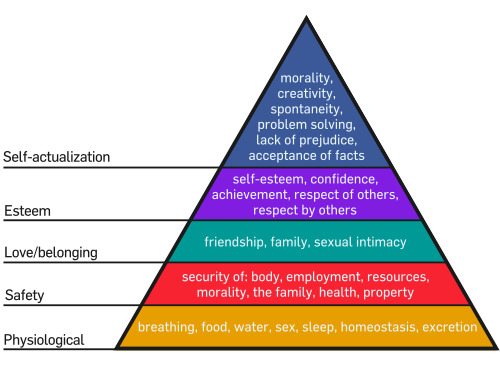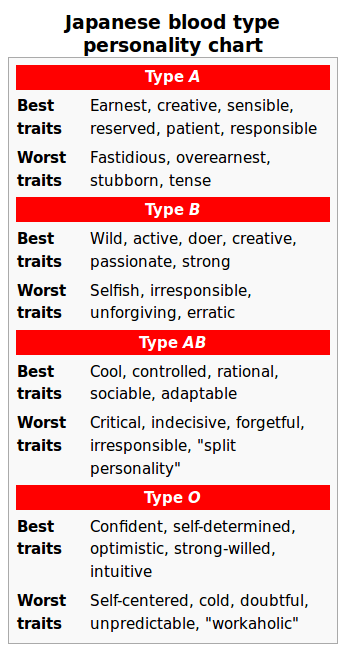7 Management Myths That Need To Be Busted
There are many aspects of modern business management which bother me. More than anything though, is the relentless invasion of idiotic myths which seems to pass for "inspirational leadership".
I've sat in many classrooms - with many different employers - and I keep seeing the same lies being told to students. HR and training teams seem to incessantly buy into the slick and convincing pre-packaged nonsense of "gurus".
I want to make this abundantly clear - there is a difference between facts and opinions. There is a difference between science and superstition. There is a difference between truth and lies.
There are things we can prove, things we can disprove, things which sound convincing, and things which we just feel must be right.
It's important that leaders are convincing speakers, have well thought through plans, and know what they are talking about. Yet too much of modern leadership science seems to be taken up with myths rather than facts. No one can be expected to lead if the foundation of their knowledge is built on a bed of naked falsehoods.
I'd like to tackle some of the more common tropes which find their way into business leadership lessons around the globe. These are easily debunked factoids which sneak their way into classrooms under the pretence of being good science. As I hope to demonstrate, there are merely a series of poorly understood pieces of trivia which have no place in a modern organisation.
Maslow's Hierarchy of Needs
I'm sure you've been in a meeting where someone in a very expensive suit has thrown up this image:

Occasionally, they'll alter it to put their product in there - what laughs!
Maslow's Hierachy of Needs (MHN) looks, superficially, to be good science. It was created by a respected scientist who properly understood the limitations of the scope of his work, and has been used for over 80 years. Sadly, it has severe deficiencies - which leads to it frequently being misapplied.
- Culture Specific. Maslow was looking at "Western" people. Does every culture place such a high value on individualism? No.
- Age specific. How important is sex to you when you're a teenager? How about when you're in old age? How does the need for security change throughout your lifetime?
- Where is spiritual satisfaction on the list?
- Can you not be a poor, hungry person who is happily solving problems?
- What happens in hostile environments, like war? Do your needs change?
- Several studies have shown that Maslow's ordering is simply incorrect for a large number of people.
In short, it's poor form to overstate the importance in a management context.
So, why is this still being taught in businesses around the world as a suitable tool for managing people?
55% of Communication is through Body Language!
Oh dear! How many times has some "motivational speaker" told you to get up off your arse and jump around like a lunatic because "the majority of communication is non-verbal"?
I'll admit it - I'm one of those people. I get people moving around to help warm them up, to motivate them, to get their heart pumping. But that's because I think it makes people more confident - not because their body language has a such a large impact on their presentation.
Before we get in to the origin of this zombie statistic, let's ask a simple question: How do you quantify such an exact percentage which is true for all forms of communication?
Anyway, the 55% rule comes from Albert Mehrabian - a professor at UCLA. His actual findings look at people* discussing feelings and emotions. He discovered that in ambiguous situations, meaning was derived in the following ratios.
7% of message pertaining to feelings and attitudes is in the words that are spoken.
38% of message pertaining to feelings and attitudes is paralinguistic (the way that the words are said).
55% of message pertaining to feelings and attitudes is in facial expression.
He specifically says
"Please note that this and other equations regarding relative importance of verbal and nonverbal messages were derived from experiments dealing with communications of feelings and attitudes (i.e., like-dislike). Unless a communicator is talking about their feelings or attitudes, these equations are not applicable."
http://www.kaaj.com/psych/smorder.html
This isn't to say that facial expressions aren't important - they are - but businesses should not be fooled into thinking that simply improving the body language of their staff will result in better communication.
*The final kicker is that this ratio doesn't apply to all people - just women. Yes, that's right, Mehrabian's experiment was only conducted on women! The women listened to single words recorded on to tape. No men were involved, and no face-to-face communication took place.
Is this really the foundation upon which businesses are basing their beliefs?
We Only Use 10% of Our Brains
I've sat in seminars where some motivational speaker has tried to enthuse the crowd by telling us about our limitless potential. "Did you know," they squeal with glee, "that you only use 10 percent of your brain? You have vast, untapped depth which will allow you to conquer any situation."
The polite response in such situations is to ask the presenter which bits of their brain they would like scooped out.
This 10% "fact" is a complete myth. It's so barely plausible that it's easy enough to demonstrate to small children that it's wrong.
There's no doubt the human brain is a remarkable organ. It contains many facets which we still don't completely understand. With hard work, it's possible to expand our knowledge, and alter our neuroplasticity.
Our brain is always in use - all of it. Not everyone uses it to their full potential, not everyone works as hard as they can, and - if people engaged their brain a little more - this pernicious 10% myth would finally die off.
NLP™
Neuro-Linguistic Programming™. All three of those words sound very scientific. I mean wow!
The first thing to say about NLP™, is that it is a product to be packaged and sold. Hence the ™. It is not scientific term - it is a marketing term.
The second thing to say about NLP™, is that it doesn't work. I don't mean that some people find it unhelpful, I mean that every piece of scientific research into it has conclusively shown that it doesn't work.
So why, in the 21st century are HR departments still wasting vast sums of money on this?
Meyers Briggs
I've already blogged about how Meyers Briggs is little better than astrology.
In short, MBTI was specifically designed to get British women from the 1940s into jobs which are suitable to their temperament. Neither Meyers nor Briggs had any psychological or statistical training.
Despite repeated testing, there has never been any evidence that MBTI is accurate or useful.
The fact that this nonsense has stayed around so long is a dark stain on modern business.
...And Yet...
Perhaps you have violently disagreed with my categorisation of your favourite management fad. What I'd like you to understand is that what seems sensible to you seems downright bizarre to other people.
Have a read of these next two examples and tell me if you think that they are sensible ways to manage people.
Blood Type
Should you manage people differently depending on their temperament? Probably; different people have different needs.
Should you attempt to determine your employee's attitude via their blood type?
Wait? What?
It sounds weird - yet it's fairly common practice in Japan.
 Take a look at the chart. Doesn't it seem familiar? Much the same traits which are "measured" by MBTI and other associated quackery. There's no science in it, of course, yet individuals are encouraged to marry "compatible" blood types and bosses are actively recruiting people based on their blood type.
Take a look at the chart. Doesn't it seem familiar? Much the same traits which are "measured" by MBTI and other associated quackery. There's no science in it, of course, yet individuals are encouraged to marry "compatible" blood types and bosses are actively recruiting people based on their blood type.
Essentially, it's a horoscope with scientific pretensions.
It has all the appearance of a real science - yet there is no genuine research to back it up. Take a look at MBTI, NLP, or any other management technique which sounds like it has a scientific basis. How is it any different from the superstition of blood types?
Handwriting Analysis
I'm sure you remember having to submit a handwritten application for a job. It was probably many years ago - before computers were widespread. Unless, of course, you live in France! In some parts of France, Graphology - the "science" of interpreting handwriting - is alive and well.
I'm not sure what an analysis of my handwriting would show, other than I never hand write anything longer than my signature on official forms...
Curiously, some 50% of French companies use handwriting analysis. What would your reaction be if your HR team insisted that every employee had to submit themselves to such nonsense? That team assignments and pay rises would be based on some witch-doctor's reading of your penmanship
Unthinkable - surely?
Well, it works for me!
"Ah, but it works for me..." is usually the response I get when I bring this up.
Personally, that sounds a lot like an elephant stone to me. You see, I have this stone that I keep in my pocket to keep the elephants away. It's working splendidly - I haven't been attacked by an elephant ever since I started carrying it around.
Aspirin is a great example of this. If you take 100 people with headaches and give them aspirin, 60% of them will report a reduction in pain. After 2 hours, 30% of them will be pain free.
If you perform the same experiment with a placebo - that is a pill with no medicinal properties - after 2 hours 6% of people will report being pain free.
So, 6% of people will swear that a tic-tac cured their headache. Is that a sound basis on which to refuse aspirin next time your head hurts?
There is an excellent and easily readable paper from The Journal of Headache and Pain which explains the placebo effect on headaches.
What Next?
It's easy to point out on a blog that someone is talking rubbish. It's a lot harder to do so in real life. The next time someone tries to impress you with one of these grand sounding systems, you should have the courage to stick your hand up and ask for proof.
Speaking truth to power is rarely popular. But I think it's important that the people who lead us understand that they cannot build on a foundation of lies.
Because, at their heart, that's what these systems are - lies. Clever lies we tell people in order to manipulate them. And that's no way to build trust between management and employees.




I think much of this simply comes down to the fact that the "science" of Psychology is highly unscientific most of the time. Even when psychologists do studies in a scientific format the sample size is usually too small to have any statistical validity.
It's very easy to do simple scientific studies on this stuff and determine it isn't "true" but then it was never meant to be - they're thinking tools, models intended to increase understanding and hopefully do better than pure chance. Meyers-Briggs and the some of the various coarse generalisations in NLP, although easily falsifiable, do have some correlation with reality. NLP actually scores points here for having a blatant rip-off of Meyers-Briggs (in the form of "Meta-programs") that you don't have to spend vast sums of money on.
I completely agree that it's lazy and probably ethically dubious to use these kinds of extremely inaccurate tools to determine anything about employees careers but unless managements care enough about their employees to take the time to understand their motivations and preferences as individuals then I expect they'll keep using the latest fashionable pseudo-science.
Psychology is complex! Your placebo example for headaches is probably not as representative as it should be since the causes are often fairly well understood. In psychiatric conditions and many physical ones where "stress" is a major factor, the placebo effect is typically in the range of 30-50% and psychiatric drugs often only beat placebo by a few percent (if indeed they do at all, as e.g. many anti-depressants seem to have been approved largely through publication bias). For many forms of psychological intervention its incredibly difficult to design the equivalent of a double-blind placebo controlled trial.
The problem is not the current management fads but that we presume to be able to systematically determine who's going to do well in a certain job, or be motivated by a particular management style. So, while you hate these things for their lack of scientific grounding, I doubt we're even close to credible alternatives (and I'd love to be proven wrong, so if you've got some examples of methods companies should be using instead please tell). We make this whole situation worse by having employment laws that scare managers away from doing anything that could be considered biased towards one individual over another. This pushes HR departments towards some kind of standardised process such that everyone can be seen to be treated exactly the same and thus into the arms of the psychological pseudo-scientists.
I have yet to be in a situation where any of these things are presented to me as scientific fact. As Mark says above, they are usually approaches for thinking about things. It sounds like you are being wound up by the way they have been presented to you by lazy trainers using them to prove a point and have redirected this at the systems themselves. I doubt Maslow ever thought that these things were only possible in the exact order he specified and that people weren't individuals, but the basic premise remains that you can spend all the time you like trying to look after employees' welfare through fun and creativity but if you haven't got the basics right like security in their role, enough time off to sleep properly and access to proper catering, then no one is going to welcome your happy clappy self actualisation team building and you need to focus on the basics first. I wish that someone had shown the diagram in your example above to some organisations I have worked for and explained how misdirected their 'employee support' was. Systems and diagrams help, I don't think it's a crime to use them as long as you recognise they are a system. I could TM the 'to do' list and peddle it like a quack trainer but it wouldn't mean that it wasn't an effective system.
Excellent article. That these practices still abound points to lazy thinking & ignorance!
I have myself been a victim of this kind of quackery.
At my first job after graduation, after about 6 months, my boss began giving me a really hard time & virtually bullied me over the next two to three months until I found another job & quit. (This was many years ago, when correspondence was still by letter / snail mail).
During my exit interview, I found out the reason for my Boss' stupidity.
Apparently a supplier in Germany had told him that my signature on correspondence was too small & that meant I would not contribute to the Company as I would be too timid, lack confidence & not accomplish anything major.
I wish it had happened recently : I could have sued the guys' pants off (which would still be small concession to the grief I underwent!
Which brings me to my conviction that today we have many "Educated" people who are just not learned enough - people of letters who can't put them together to form words.